How does the Medieval Warm Period compare to current global temperatures?
What the science says...
| Select a level... |
 Basic
Basic
|
 Intermediate
Intermediate
| |||
|
While the Medieval Warm Period saw unusually warm temperatures in some regions, globally the planet was cooler than current conditions. |
|||||
Medieval Warm Period was warmer
"For now, though, it is enough just to see the Medieval WARM Period shown to be global, and warmer than today." (Musings from the Chiefio)
The Medieval Warm Period spanned between the 10th and 15th centuries, and corresponded with warmer temperatures in certain regions around the world. During this time, ice-free seas allowed the Vikings to colonize Greenland. North America experienced prolonged droughts. Just how hot was the Medieval Warm Period? Was the globe warmer than now? To answer this question, one needs to look beyond warming in a few regions and view temperatures on a global scale.
Prior temperature reconstructions tend to focus on the global average (or sometimes hemispheric average). To answer the question of the Medieval Warm Period, more than 1,000 tree-ring, ice core, coral, sediment and other assorted proxy records spanning both hemispheres were used to construct a global map of temperature change over the past 1,500 years (Mann 2009). The Medieval Warm Period saw warm conditions over a large part of the North Atlantic, Southern Greenland, the Eurasian Arctic, and parts of North America. In these regions, temperature appears to be warmer than the 1961–1990 baseline. In some areas, temperatures were even as warm as today. However, certain regions such as central Eurasia, northwestern North America, and the tropical Pacific are substantially cooler compared to the 1961 to 1990 average.
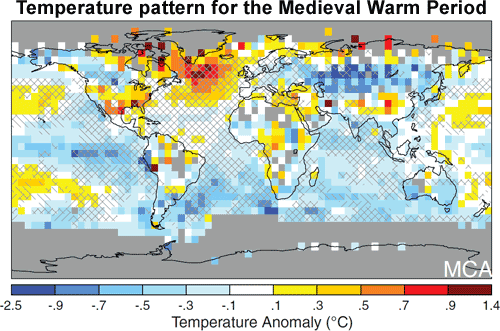
Figure 1: Reconstructed surface temperature anomaly for Medieval Warm Period (950 to 1250 A.D.), relative to the 1961– 1990 reference period. Gray areas indicates regions where adequate temperature data are unavailable.
How does the Medieval Warm Period compare to current conditions? Here is the temperature pattern for the last decade (1999 to 2008). What we see is widespread warming (with a few exceptions such as regional East Antarctic cooling)
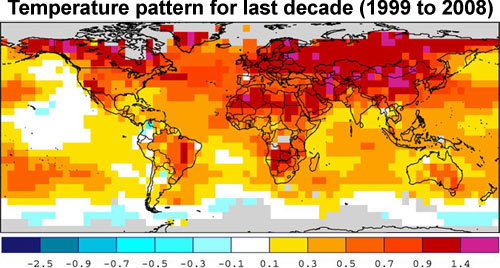
Figure 3: Surface temperature anomaly for period 1999 to 2008, relative to the 1961– 1990 reference period. Gray areas indicates regions where adequate temperature data are unavailable (NOAA).
The Medieval Warm Period was not a global phenomenon. Warmer conditions were concentrated in certain regions. Some regions were even colder than during the Little Ice Age. To claim the Medieval Warm Period was warmer than today is to narrowly focus on a few regions that showed unusual warmth. However, when we look at the broader picture, we see that the Medieval Warm Period was a regional phenomenon with other regions showing strong cooling. What is more, and as can be seen in Figure 4, globally, temperatures during the Medieval Period were less than today.
Figure 4: Global surface temperature reconstruction from Mann et al. (2008)
A seminal paper on this subject was published in Nature Geoscience in 2013 by the PAGES 2k team, with 78 researchers contributing as co-authors from 60 separate scientific institutions around the world. PAGES (Past Global Changes) is a scientific network which supports research aimed at understanding the Earth’s past environment in order to make predictions for the future. It's funded by the U.S. and Swiss National Science Foundations, and the National Oceanic and Atmospheric Administration.
In 2006, scientists in the PAGES network decided to organize an initiative to reconstruct the climate of the last 2,000 years, which they called The PAGES 2k Network. This network consists of scientists from 9 regional working groups, each of which collects and processes the best paleoclimate (past climate change) data from their respective region. It's a clever approach because it allows the experts in their local proxy data to contribute to a much larger global project.
The PAGES 2k team found that a global surface cooling trend over the past 2,000 years has been erased by the global warming over the past century. Current temperatures are hotter than at any time in the past 1,400 years, including during the Medieval Warm Period (Figure 5).
Figure 5: a) Previously published Northern Hemisphere 30-year-mean temperature reconstructions relative to the 1961–1990 reference period. b) Standardized 30-year-mean temperatures averaged across all seven continental-scale regions. Blue symbols are area-weighted averages, and bars show 25th and 75th unweighted percentiles to illustrate the variability among regions; open black boxes are unweighted medians. The red line is the 30-year-average annual global temperature from the HadCRUT4 instrumental time series relative to 1961–1990, and scaled visually to match the standardized values over the instrumental period.
They also found that the warming occurred at different times in different geographical areas.
"the period from around AD 830 to 1100 generally encompassed a sustained warm interval in all four Northern Hemisphere regions. In South America and Australasia, a sustained warm period occurred later, from around AD 1160 to 1370."
"Our regional temperature reconstructions also show little evidence for globally synchronized multi-decadal shifts that would mark well-defined worldwide MWP and LIA intervals. Instead, the specific timing of peak warm and cold intervals varies regionally, with multi-decadal variability resulting in regionally specific temperature departures from an underlying global cooling trend."
Intermediate rebuttal written by dana1981
Last updated on 9 July 2015 by pattimer. View Archives































 Arguments
Arguments




























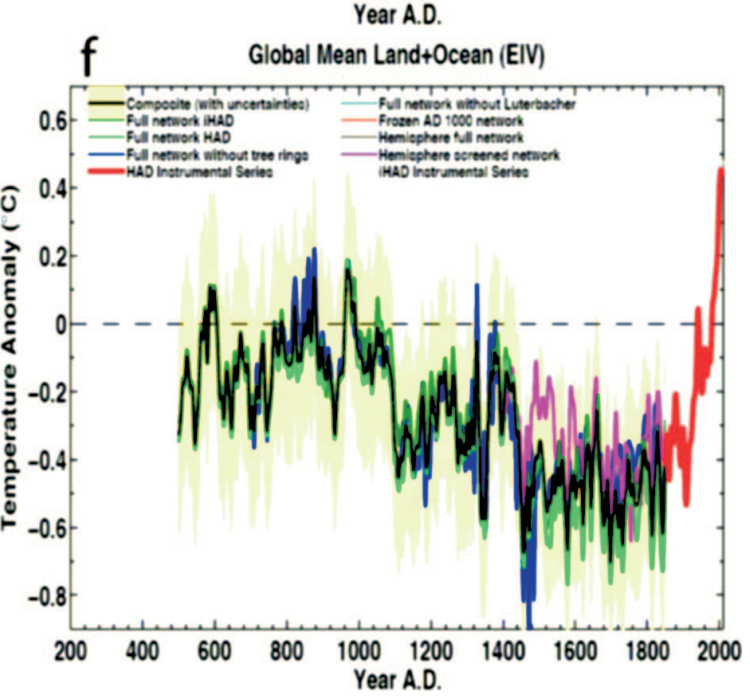
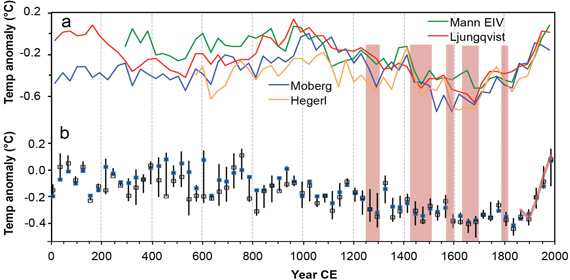
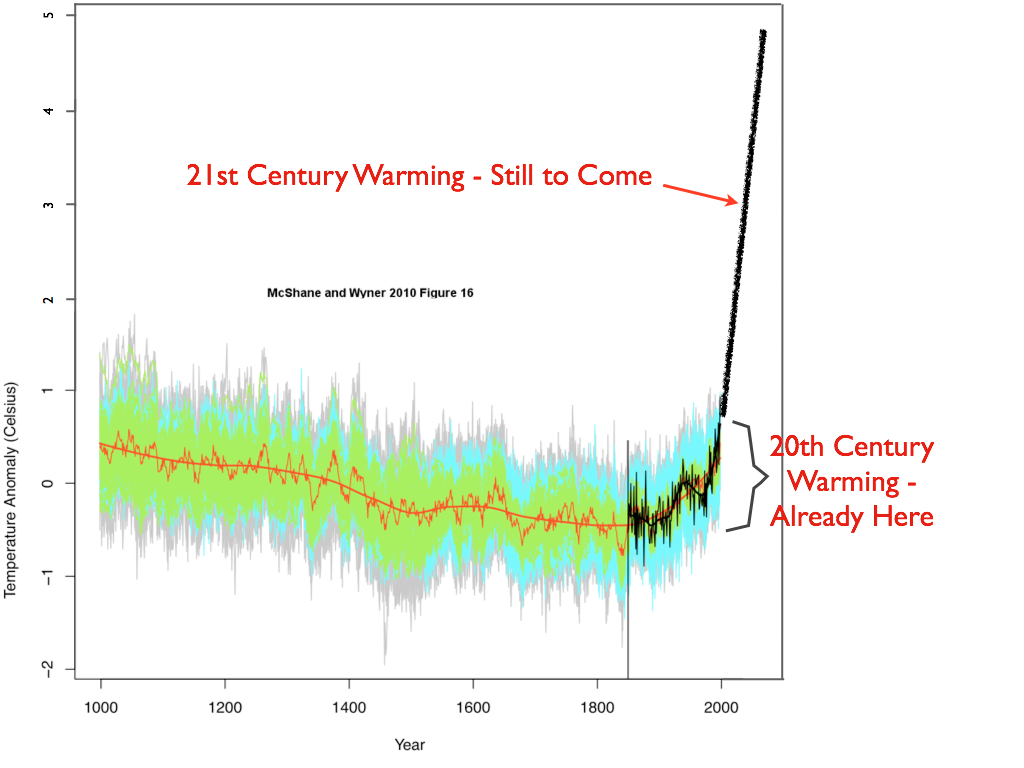 The Yooper
The Yooper
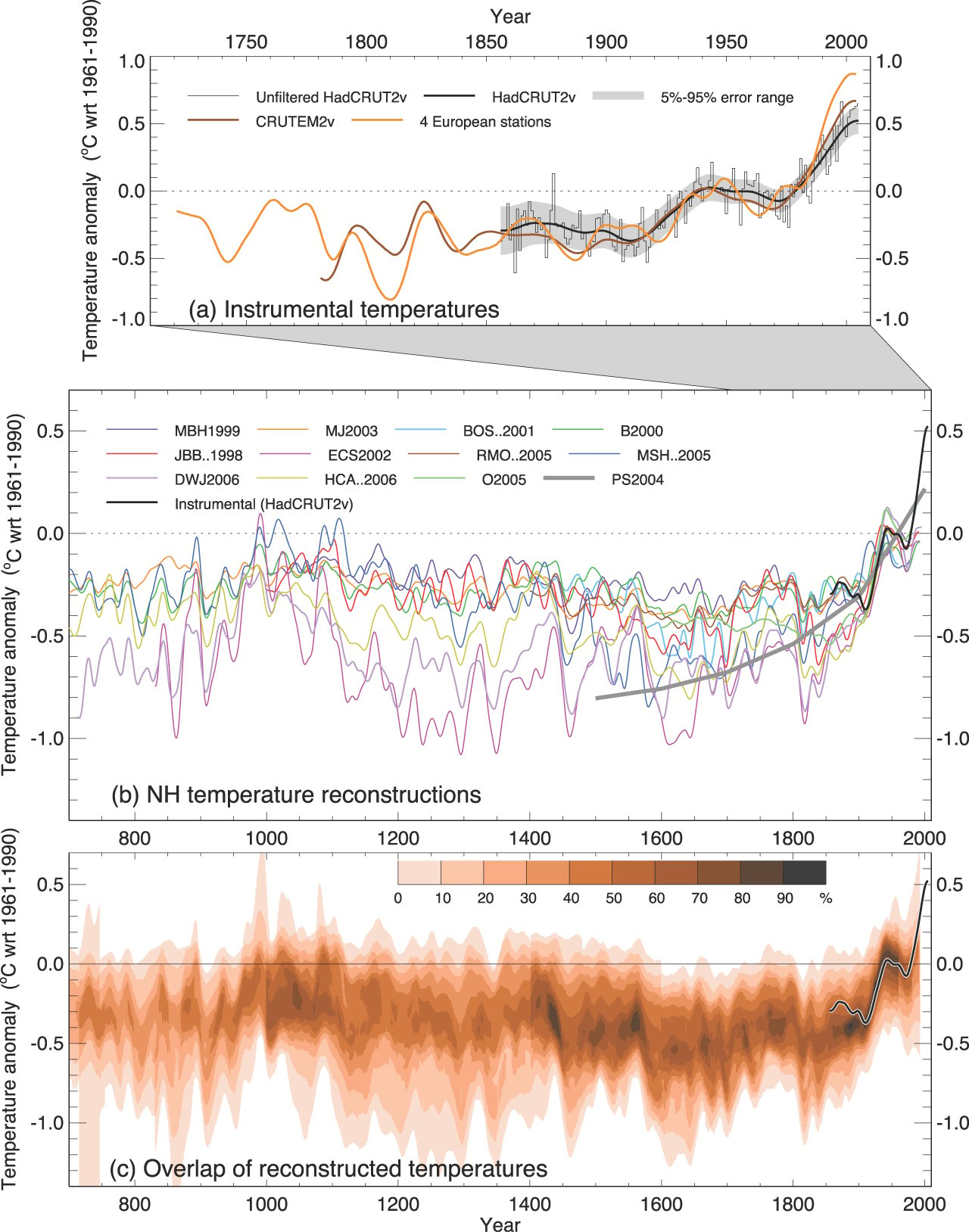 Examples of regional variability over that time period:
Examples of regional variability over that time period:
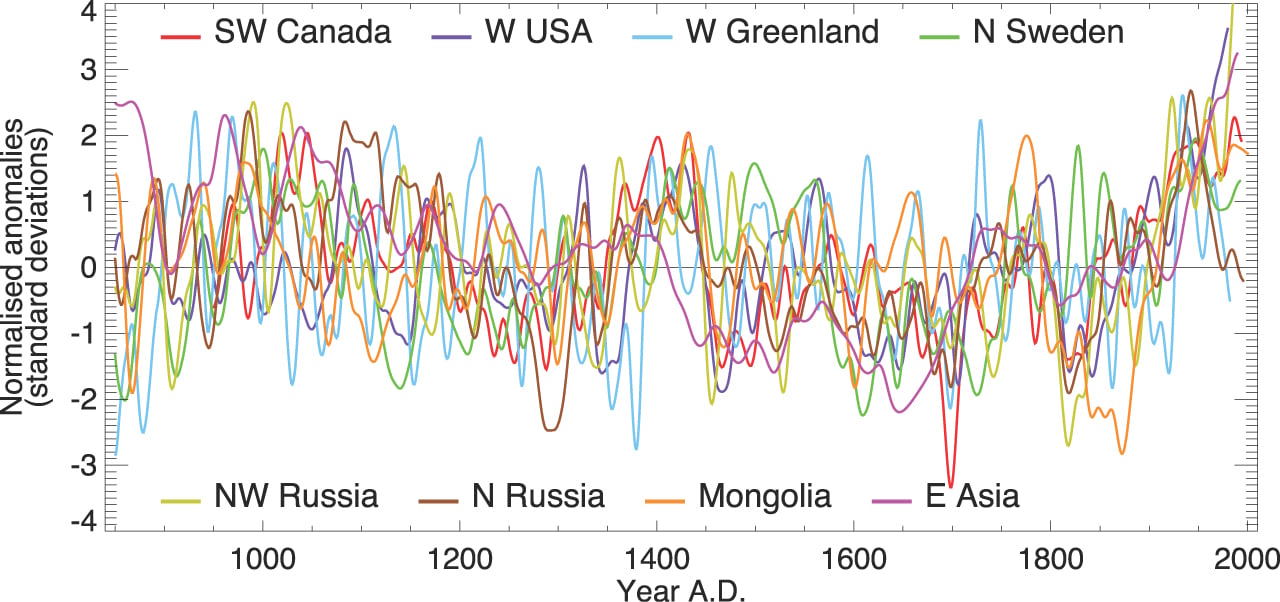 The IPCC's summary statement on the MWP: Source: IPCC WG1 Chapter 6.6 .
Weigh that against the CO2Science position statement on global warming, formulated in 1998.
As a scientist, I'm sure you also appreciate the need to first weigh all of the available evidence before formulating an explanation that best explains all of that evidence. And to revise that explanation as newer data becomes available over time.
The science says one thing about the human attribution of CO2 and its effects (known since the days of Tyndall and Fourier).
CO2Science says another.
What does your skeptical scientist mind say?
The Yooper
The IPCC's summary statement on the MWP: Source: IPCC WG1 Chapter 6.6 .
Weigh that against the CO2Science position statement on global warming, formulated in 1998.
As a scientist, I'm sure you also appreciate the need to first weigh all of the available evidence before formulating an explanation that best explains all of that evidence. And to revise that explanation as newer data becomes available over time.
The science says one thing about the human attribution of CO2 and its effects (known since the days of Tyndall and Fourier).
CO2Science says another.
What does your skeptical scientist mind say?
The Yooper







Climate Myth...